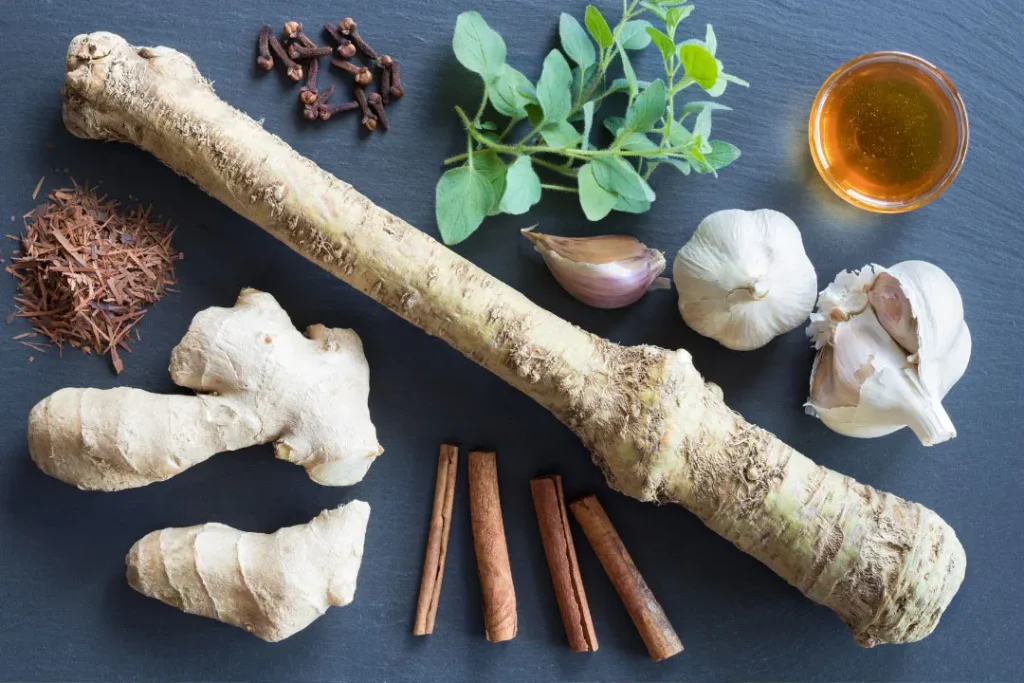A native of Asia, the chaulmoogra tree (Hydnocarpus wightianus or Taraktogenos kurzii) is most common in India and Burma. The seeds of the tree have a long history of usage in Chinese and Ayurvedic medicine, notably for the treatment of skin conditions. The nature of chaulmoogra, its health advantages, the best dose, its negative effects, possible drug interactions, and suggestions for its safe usage are all covered in this article.
You May Also Like:
5 Great Nootropic Herbs for Focus and Mental Clarity
5 Great Nootropic Herbs for Energy, Focus, and Productivity
Chaulmoogra: Benefits, Dosage, Side Effects, Drug Interactions, and Other Important Information is an original (NootropicsPlanet) article.
The Nature of Chaulmoogra
The family Achariaceae includes the deciduous tree known as Chaulmoogra. The tree is well known for its huge, rounded fruits with oil-rich seeds within. The Chaulmoogra oil, which is made from Chaulmoogra seeds, has historically been used medicinally. Unique fatty acids from the family of cyclopentenyl fatty acids called chaulmoogric acid and hydnocarpic acid are found in chaulmoogra oil. These fatty acids are distinct because they include a cyclopentenyl ring, which is uncommon among the fatty acids found in the majority of plant and animal fats and oils. The more prevalent in nature oleic, palmitic, and linoleic acids are also present in chaulmoogra oil.
Health Benefits of Chaulmoogra
Historically, leprosy has been the most common skin ailment that Chaulmoogra oil has been used to treat. Chaulmoogra oil was one of the few therapies for this condition accessible before the development of current antibiotics. The leprosy-causing bacteria, Mycobacterium leprae, may be killed by the special fatty acids in the oil thanks to its bactericidal capabilities.
Additionally, eczema, psoriasis, and skin ulcers have all been successfully treated with chaulmoogra oil. According to reports, the oil possesses analgesic, anti-inflammatory, and wound-healing characteristics that may help with the treatment of various disorders.
Chemistry of Chaulmoogra
The special makeup of the seed oil from Chaulmoogra is the secret to its therapeutic benefits. Chaulmoogra oil is mostly composed of a number of unique fatty acids, including hydnocarpic and chaulmoogric acids, which are cyclopentenyl fatty acids. These acids are unusual because the fatty acid chain contains a cyclopentenyl ring, a structural element that is uncommon in other naturally occurring fatty acids.
More well-known fatty acids like palmitic, oleic, and linoleic acids are also present in the oil, which is why they are found in both plant and animal fats and oils.

Physiological Mechanisms of Action of Chaulmoogra
Chaulmoogra oil contains unique cyclopentenyl fatty acids, which seem to be the primary contributors to the oil’s medicinal properties. Mycobacterium leprae has been shown to be especially susceptible to these fatty acids’ bactericidal effects.
Although the particular mechanisms of action are still not fully known, it is thought that these fatty acids prevent the production of the bacterial cell wall, which kills the germs. Chaulmoogra oil has a long history of use as a leprosy therapy, especially in the time before the discovery of antibiotics due to its bactericidal qualities.
Additionally, chaulmoogra oil has shown potential analgesic and anti-inflammatory activities. Though the precise processes behind these benefits are still under investigation, it is believed that they have something to do with the body’s inflammatory pathways being modulated.
The purported capacity of Chaulmoogra oil to heal wounds is a major component of its possible medicinal impact. Inflammation, tissue development, and remodeling are all important steps in the intricate physiological process of wound healing. These phases are thought to be aided by the fatty acids in chaulmoogra oil, which as previously stated, contains anti-inflammatory and antibacterial properties, which help to fight off infection and advance healing.
It’s crucial to remember that even while the individual Chaulmoogra ingredients have all undergone research, more thorough studies on the overall impact of these compounds in relation to Chaulmoogra are still required. Such studies will strengthen the rationale for the therapeutic use of Chaulmoogra and contribute to a better knowledge of how it functions.

Optimal Dosage of Chaulmoogra
There isn’t presently a standard recommended dose for chaulmoogra oil since it might vary depending on the ailment being treated and your general health. It is advised to use Chaulmoogra oil in accordance with a doctor’s orders or, if using a professionally made product, to adhere to the manufacturer’s directions.
Side Effects of Chaulmoogra
Although chaulmoogra oil is often thought to be safe for topical use, some people may have skin sensitivity or allergic reactions. Because of its probable toxicity, it is typically not advised to consume Chaulmoogra oil. It is crucial to stop taking Chaulmoogra oil and seek medical advice if any negative side effects appear.

Potential Substance Interactions with Chaulmoogra
Regarding possible interactions between Chaulmoogra oil and other substances, there isn’t much information yet. Before beginning to use Chaulmoogra oil, like with any supplement or drug, it is essential to speak with a healthcare professional, particularly for those who are also using other prescriptions or supplements.
Responsible Use of Chaulmoogra
Chaulmoogra oil should be used properly to fully explore the possible health advantages. Before beginning any new treatment plan, patients should always speak with their doctor, especially if they have a pre-existing ailment or are already on medication.
Although Chaulmoogra oil has the ability to heal a number of skin issues, it should not be used as a replacement for medical advice or treatment from a trained expert. When used with a thorough treatment plan and under the supervision of a medical professional, the oil may be a useful addition.
An intriguing convergence between conventional medicine and contemporary science may be found in Chaulmoograoil. It is an interesting subject for more investigation due to its distinctive chemical makeup and possible health advantages. To achieve the best outcomes and safety, its use must be constrained by data, caution, and expert medical guidance.

Chaulmoogra:
Conclusion
The chaulmoogra tree can be easily found in India and Burma and it holds significant medicinal value in traditional Chinese medicine and Ayurvedic. The oil extracted from its seeds contains unique fatty acids from the cyclopentenyl family of fatty acids. Chaulmoogra oil is known for its potential antimicrobial, anti-inflammatory, and analgesic effects in which it has been used to treat common skin ailments such as leprosy.
Mycobacterium leprae is the bacteria that cause leprosy and it is susceptible to the bactericidal effects of the fatty acids from seed oil. This type of fatty acid is hardly found in naturally occurring fats as it contains the cyclopentenyl ring. While further research is necessary to fully understand the mechanisms of the medicinal oil, the chaulmoogra tree presents an intriguing avenue as a natural supplement. As always, it is important to seek personalized advice from a healthcare professional to prevent overdose and to make a proper supplement regimen that suits your specific needs. It is crucial to purchase Chaulmoogra oil from a reputable seller as well to ensure the quality of the product.
References:
- Hydnocarpus: An Ethnopharmacological, Phytochemical, and Pharmacological Review. Retrieved from:https://www.researchgate.net/publication/261733902_Hydnocarpus_An_Ethnopharmacological_Phytochemical_and_Pharmacological_Review
- Evaluation of physicochemical and tribological properties of chaulmoogra (Hydnocarpus wightianus) oil as green lubricant base stock. Retrieved from: https://journals.sagepub.com/doi/abs/10.1177/1350650119899529?journalCode=pija
- Chaulmoogra oil as scientific knowledge: the construction of a treatment for leprosy. Retrieved from: https://www.researchgate.net/publication/24039104_Chaulmoogra_oil_as_scientific_knowledge_the_construction_of_a_treatment_for_leprosy
Important Note: The information contained in this article is for general informational purposes only, and should not be construed as health or medical advice, nor is it intended to diagnose, prevent, treat, or cure any disease or health condition. Before embarking on any diet, fitness regimen, or program of nutritional supplementation, it is advisable to consult your healthcare professional in order to determine its safety and probable efficacy in terms of your individual state of health.
Regarding Nutritional Supplements Or Other Non-Prescription Health Products: If any nutritional supplements or other non-prescription health products are mentioned in the foregoing article, any claims or statements made about them have not been evaluated by the U.S. Food and Drug Administration, and such nutritional supplements or other health products are not intended to diagnose, treat, cure, or prevent any disease.


